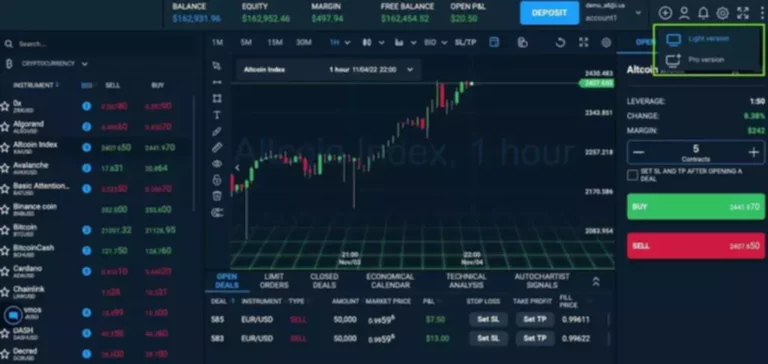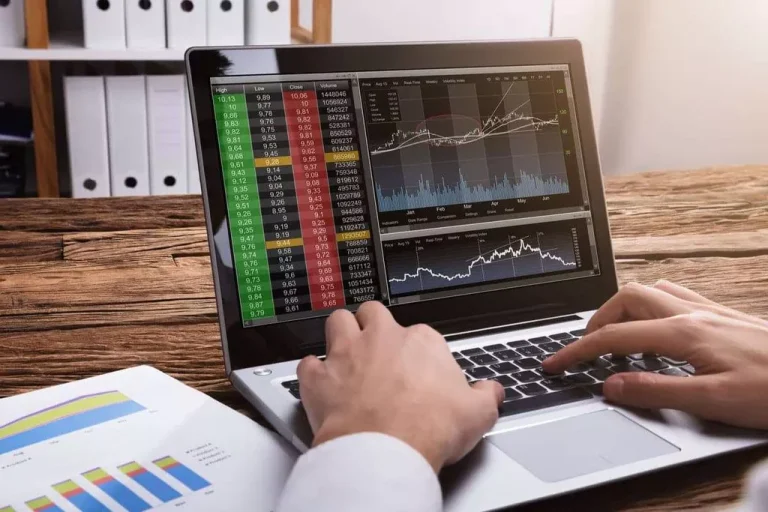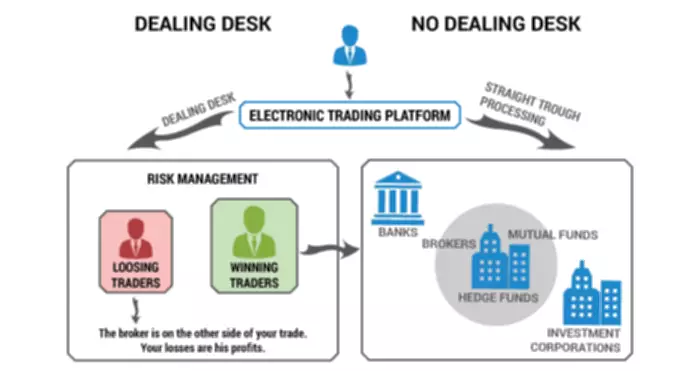Content
- Trading and arbitrage in cryptocurrency markets
- What drives the liquidity of cryptocurrencies? A long-term analysis
- Final thoughts on liquidity and its measurement
- Why are some stocks more liquid than others?
- Introduction to Liquidity in Crypto Markets
- Explaining Liquidity in Cryptocurrencies — What It Is and Why it Matters
This is because, in a low liquidity market, a buyer who buys many coins at once or a seller who sells many coins at once can cause large swings in the price of a coin. In a larger liquidity environment, it would be easier for the large trader to find buyers and sellers. This refers to the volume or the total number of coins traded–the liquidity providers for cryptocurrency exchange volume of crypto is the total trading volume across all exchanges that offer the trade of that coin.
Trading and arbitrage in cryptocurrency markets
- If you think your project could benefit from extending its presence on crypto exchanges, let us know.
- According to the chief commercial officer of Crypto Finance, Patrick Heusser, this collaboration will play a key role in the digital asset space’s evolution.
- Laws and regulations followed in nations can significantly impact a digital asset’s liquidity.
- Among the 15 fitted copulae, the most frequently selected are Gumbel (A3) and BB7 (A8), which exhibit asymmetric tail dependence.
As a fledgling technology, cryptocurrencies currently lack a set path; it is less regulated and contains many unscrupulous people looking to manipulate the market to their advantage. In a deep and liquid digital asset, such as Bitcoin or Ether, controlling the price action in that market becomes difficult for a single market participant or a group of participants. You should not construe any such information or other material as legal, tax, investment, financial, cybersecurity, or other advice. Nothing contained herein shall constitute a solicitation, recommendation, endorsement, or offer by Crypto.com to invest, buy, or sell any coins, tokens, or other crypto assets. Returns on the buying https://www.xcritical.com/ and selling of crypto assets may be subject to tax, including capital gains tax, in your jurisdiction. Any descriptions of Crypto.com products or features are merely for illustrative purposes and do not constitute an endorsement, invitation, or solicitation.
What drives the liquidity of cryptocurrencies? A long-term analysis
In the previous article, we’ve explained the importance of liquidity and the factors that affect it. This guide will be dedicated towards uncovering the different indicators that measure liquidity and how you can utilize them to trade effectively. Due to the scope of downturns and the dishonest behaviour that has populated the market for years, it will be a long and challenging journey to reclaim the initial popularity of crypto.
Final thoughts on liquidity and its measurement
For example, a drop with considerable volume behind it might mean a coin is in for an extended bear run. If price movements are not backed by volume, this would however indicate that only a small number of people are backing the current price trend and therefore, it may be short-lived. In fact, spikes in prices when trading volume is low can be an indicator of price manipulation.
Why are some stocks more liquid than others?
Regulations can significantly affect digital asset liquidity, potentially leading to increased prices and market decreases if countries ban trading or make it difficult for individuals to buy and sell digital tokens. Adequate liquidity plays a key role in the optimal operation and resilience of finance exchanges, be they conventional or digital. Trading is not solely based on the high trading volume but also on the efficiency of the swap. The optimal residual distributions for all the six cryptocurrencies are positively skewed T distributions, with a skewness parameter, λ, approximately 4–5 and a scale parameter, η, approximately 3–6. This indicates that the residuals are distributed in an asymmetric and fat-tailed manner.
Introduction to Liquidity in Crypto Markets
Investing in an illiquid exchange or coin pair could increase your difficulty in trading the coin and also result in higher execution costs. Compared to ETH’s trading volume of $1.8 billion, Terracoin (TRC) only has a volume of $2,761. A single buy or sell order would significantly affect TRC’s prices, thus making it more vulnerable to worrying levels of volatility and manipulation. It is therefore wise to stay away from trading illiquid coins unless they have garnered a suitable trading mass. Bid-ask spreads are generally narrower in this case, as the sellers and buyers are plentiful in the sector, and it is much easier to match supply and demand in terms of prices.
Explaining Liquidity in Cryptocurrencies — What It Is and Why it Matters
Genesis focuses on security and compliance, creating a transparent trading environment for its global clientele. With a reputation for efficiency, Genesis offers world-class pricing and access to over 100 coins, attracting institutional clients. They ensure there are enough buy and sell orders, even during low demand periods, to avoid difficulty in executing transactions and price fluctuations.
How to measure the liquidity of cryptocurrencies
Given the sector’s rapid expansion and inherent dynamism, research on the cryptocurrency market is continually evolving. In subsequent discussions on cross-asset dependency within cryptocurrencies, these references will be more thoroughly examined. Automatic market makers are algorithms built on blockchains that match trades with each other automatically from liquidity pools, eliminating the need for a centralized intermediary like an exchange.
The technology and economic determinants of cryptocurrency exchange rates: The case of Bitcoin
You may, for instance, own a very rare and valuable family heirloom appraised at $150,000. However, if there is not a market (i.e., no buyers) for your object, then it is irrelevant since nobody will pay anywhere close to its appraised value—it is very illiquid. It may even require hiring an auction house to act as a broker and track down potentially interested parties, which will take time and incur costs. It is interesting to note that the biggest exchange – based on total cryptocurrency volume – is ranked 5th for the BCH/BTC coin pair. This goes to show that looking only at the liquidity of an exchange is insufficient; you have to ultimately look at the liquidity of the specific coin pair that you’re interested to trade on. You should always trade on exchanges with a higher trading volume to enjoy better prices and quicker trades.
While having sufficient liquid assets is crucial for covering short-term obligations and unexpected expenses, an excess of liquidity can also indicate inefficiencies or missed opportunities in a business or personal finance strategy. A quick ratio of 1 means that after excluding inventory, the business has exactly enough liquid assets to cover its current liabilities. The cash ratio is the most conservative measure of liquidity, calculated by dividing cash and cash equivalents by current liabilities. To measure liquidity, we use slippage, which measures the price impact of a buy or sell order. Slippage refers to the difference between the expected price of a trade and the price at which the trade is actually executed.
This observation indicates that despite its acceptance as a mainstream financial asset, cryptocurrency still serves as a speculative asset and should be cautiously used. Finally, we report that liquidity connectedness is a phenomenon dependent on the time–frequency connectedness that offers diverse opportunities to investors with short- and long-term investment horizons. This study explores the dynamics of liquidity connectedness in the cryptocurrency market using several static and dynamic connectedness approaches. We use six major cryptocurrencies based on market capitalization and the availability of comprehensive time series data. Using the DY2012 network-based spillover approach, we report a moderate liquidity connectedness among sample cryptocurrencies, with BTC and LTC playing a significant role concerning the magnitude of connectedness.
In some sense, market liquidity can be compared to popularity, meaning each market and crypto exchange has its liquidity. TVL is an essential issue for DeFi platforms and protocols because it can affect platform liquidity, which is the ease and cost with which users can buy or sell assets. A platform or protocol with a high TVL will have more assets available for trading, which can make it more attractive to users and increase liquidity. Securities that are traded over the counter (OTC), such as certain complex derivatives, are often quite illiquid. For individuals, a home, a time-share, or a car are all somewhat illiquid in that it may take several weeks to months to find a buyer, and several more weeks to finalize the transaction and receive payment.
Addressing risks is crucial for the success of any LP, ensuring robust operations in all market conditions. Top providers avoid malpractice cases, such as pump-and-dump schemes and wash trading, and do not promise specific trading volumes or crypto prices. Market takers value holding assets and may put more money than the market price, while MMs buy or sell assets for profit. Crypto exchanges often collaborate with other popular swaps or MMs to provide liquidity. Market takers may receive additional incentives, such as compensation for incomplete trades and daily or weekly updates on compensation. Due to the larger number of market participants, it improves transaction speed and allows traders to buy or sell assets quickly at market prices without delays.
In one of our previous articles, we examined the role of liquidity in crypto futures. Market depth measures the number of stocks, contracts, or other units of a security or financial instrument available to buy or sell at a particular price level, often measured as a percentage of the distance from the midprice. This is, in our opinion, one of the most valuable measures of liquidity, as it shows how much liquidity is available to the trader if he were to immediately execute a trade of a specific size.
A wider spread in an illiquid market makes it more expensive to trade since you have to pay a premium to buy or sell at a lower price. It helps identify digital assets that can allow one to make money and offload for a fiat fee. Moreover, an asset with high liquidity means one can buy or sell at a fair value without much difficulty. Individuals can identify high liquidity in cryptocurrencies by spotting a large number of investors and high trading volume.
First, the large number of traders helps the market stabilise the price effortlessly and without market manipulation. Spreads, in this case, are narrow, which means that more deals will go through, motivating traders to devise more strategies on the open market. However, if traders wish to quantify the levels of liquidity within a given sector, they can analyse the trading volume, bid-ask spreads and the overall turnover rate. With optimal liquidity, high trading volume tends to increase dramatically, showcasing the abundance of active traders and effortless price stability. Trading volumes are an important factor in determining liquidity in the cryptocurrency market. It refers to the total amount of digital assets exchanged on a cryptocurrency exchange over a given period.
BTC, along with LTC and XRP, appears as a leading contributor to the liquidity connectedness in the short run. Contrarily, ETH emerges as a principal contributor to the liquidity connectedness in the long-run analysis. Moreover, frequency-based liquidity clustering analysis shows a tight, short- and long-term clustering compared with the medium-term frequency domain. This evidence provides a possible explanation about the short- and long-term investment preferences of the investors operating in the cryptocurrency market.
In many AMMs, governance tokens are used to vote on changes to the protocol, such as fee adjustments or upgrades to the liquidity pool algorithms. AMMs can be quickly adapted to include new tokens or change their pricing mechanisms through decentralised governance. When you leave a comment on this article, please note that if approved, it will be publicly available and visible at the bottom of the article on this blog. For more information on how Sage uses and looks after your personal data and the data protection rights you have, please read our Privacy Policy.
The error distributions show that only the BNB log-return residuals exhibit a slightly asymmetric distribution (λ \(\ne\) 0 in Table 5a), while other return residuals are symmetrically distributed. The fitted degree of freedom, η, ranges from 3 to 5, indicating a notable fat-tail effect. The fundamental concept of stationarity in a time series implies that the data distribution remains independent of time t, indicating that knowledge of time alone does not provide any information about the distribution.












